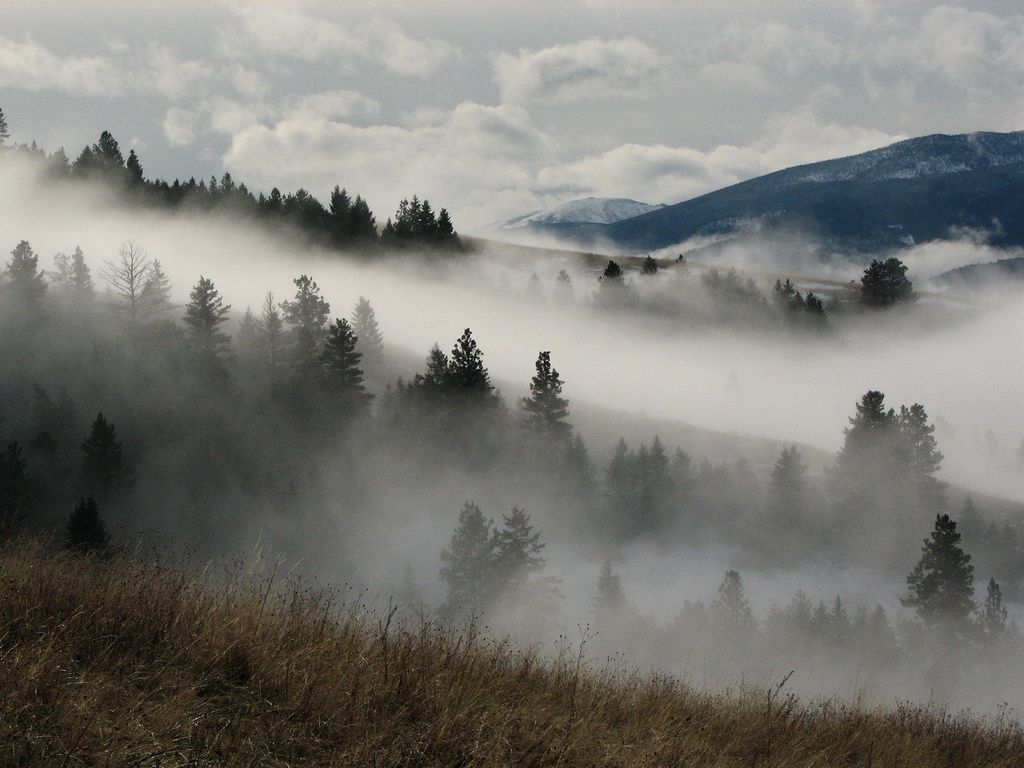Hailstones fall from the sky in fascinating shapes and sizes, each telling a unique story about the violent atmospheric conditions that created them. Understanding why some hailstones are perfectly round while others are jagged and irregular reveals incredible insights into storm dynamics.
⚡ The Atmospheric Factory: Where Hail is Born
Hail formation begins in the towering cumulonimbus clouds that dominate severe thunderstorms. These atmospheric giants can reach heights of 50,000 feet or more, creating environments with extreme temperature gradients and powerful updrafts. The battle between irregular and spherical hail formation starts here, in these vertical wind tunnels where water droplets transform into ice.
Within these storm clouds, supercooled water droplets exist in liquid form despite temperatures well below freezing. When these droplets collide with ice nuclei—tiny particles of dust, pollen, or other matter—they instantly freeze, creating the embryonic hailstone. What happens next determines whether that hailstone will become a smooth sphere or an irregular chunk of ice.
The updraft strength in these storms is crucial. Updrafts exceeding 100 miles per hour can suspend hailstones for extended periods, allowing them to grow larger and undergo multiple cycles of ascent and descent. Each journey through different temperature zones adds layers to the hailstone, much like tree rings recording the history of its turbulent birth.
🔬 The Physics Behind Spherical Perfection
Spherical hailstones represent a specific set of atmospheric conditions that favor uniform growth. When a developing hailstone remains suspended in a relatively stable part of the updraft, it rotates freely while collecting moisture evenly from all sides. This rotation is key to achieving spherical symmetry.
The wet growth regime plays a critical role in creating smooth, spherical hail. When a hailstone passes through regions with abundant supercooled water droplets and temperatures near freezing, the collected water doesn’t freeze instantly. Instead, it spreads across the surface before freezing, creating a smooth, glassy layer. This process, repeated through multiple cycles, builds a nearly perfect sphere.
Surface tension also contributes to spherical formation. When liquid water coats the hailstone before freezing, molecular forces pull the water into the most efficient shape—a sphere—which minimizes surface area relative to volume. This natural tendency toward spherical geometry creates those remarkably round hailstones that sometimes fall during severe storms.
Temperature Zones and Growth Patterns
The temperature environment within the storm cloud creates distinct growth zones. Between 0°C and -10°C, hailstones typically experience wet growth, producing clear ice layers. Below -10°C, dry growth dominates, creating opaque, milky ice as air bubbles become trapped in rapidly freezing water. Spherical hailstones often result from extended periods in the wet growth zone.
Scientists have identified that hailstones spending more time in consistent temperature zones develop more regular shapes. The uniformity of environmental conditions allows for symmetrical accretion—the process of adding ice layers—resulting in those aesthetically pleasing spherical forms that capture our imagination.
🌪️ The Chaos Factor: Why Hail Becomes Irregular
Irregular hailstones tell a story of turbulence and chaos. When developing hailstones encounter variable updraft strengths, wind shear, or collide with other ice particles, their growth becomes asymmetric. These chaotic conditions are actually more common than the stable environments that produce spheres.
Tumbling motion significantly affects hailstone shape. Unlike the steady rotation that produces spheres, tumbling causes the hailstone to present different surfaces to the moisture-laden airflow at different times. One side might accumulate ice rapidly while another remains relatively unchanged, creating lobes, protrusions, and irregular surfaces.
Collision events dramatically alter hailstone morphology. When two or more developing hailstones collide within the storm, they can merge, creating compound structures with highly irregular shapes. These collision-born hailstones often display flat surfaces, angular edges, and bizarre geometries that fascinate meteorologists and storm chasers alike.
The Dry Growth Dominance
Irregular hailstones frequently result from extended periods in dry growth conditions. When hailstones circulate through regions below -10°C with lower liquid water content, ice accumulates rapidly but unevenly. The fast-freezing process traps air bubbles and creates rough, opaque surfaces that lack the smooth finish of wet-growth spheres.
Wind shear—changes in wind speed and direction with altitude—introduces rotational forces that distort growing hailstones. These aerodynamic forces can stretch hailstones, create ridges, or produce disc-like shapes. The stronger the wind shear, the more pronounced these irregularities become.
📊 Comparing the Two Formation Pathways
| Characteristic | Spherical Hail | Irregular Hail |
|---|---|---|
| Primary Growth Zone | Wet growth (0°C to -10°C) | Dry growth (below -10°C) |
| Updraft Stability | Consistent, steady | Variable, turbulent |
| Rotation Pattern | Steady spinning | Tumbling, erratic |
| Ice Clarity | Clear, glassy layers | Opaque, milky appearance |
| Surface Texture | Smooth, uniform | Rough, bumpy |
| Collision Frequency | Minimal | Common |
🎯 The Role of Storm Architecture
Not all thunderstorms create equal opportunities for hail formation. Supercell thunderstorms—rotating storms with organized updrafts and downdrafts—provide the most favorable environment for large hail development. The structure of these storms influences whether hail emerges spherical or irregular.
The bounded weak echo region (BWER) in supercells represents an area of intense updraft where hail embryos first form. Hailstones that remain near the edge of this region, where updraft speeds are strong but relatively uniform, tend to develop more spherical shapes. Those caught in the chaotic central core experience the turbulence that creates irregularity.
Multicell storms, consisting of multiple storm cells at different life stages, typically produce more irregular hail. The complex wind patterns and varying updraft strengths within these systems create unpredictable growth environments. Hailstones may be passed between cells, experiencing wildly different conditions that result in asymmetric accumulation.
The Hail Cascade Mechanism
Some storms develop a hail cascade—a conveyor belt-like mechanism where hailstones are systematically carried through the storm’s structure. In well-organized cascades with laminar flow characteristics, hailstones experience more uniform conditions, favoring spherical development. Disrupted cascades with turbulent flow produce irregular stones.
🔍 Inside the Hailstone: Reading the Layers
Cross-sections of hailstones reveal concentric layers, much like onion rings, that document their journey through the storm. Scientists analyze these layers to reconstruct the environmental conditions the hailstone encountered. Spherical hailstones typically display uniform, evenly-spaced layers, while irregular stones show varying layer thicknesses and interrupted patterns.
Clear layers indicate wet growth periods where water froze slowly on the surface. Opaque layers result from dry growth with rapid freezing and air bubble entrapment. The alternating pattern between clear and opaque layers reveals the number of cycles the hailstone completed through different storm regions.
Bubble distribution within hailstone layers provides clues about formation conditions. Spherical hailstones often contain fewer, more evenly distributed bubbles compared to irregular stones, which may show bubble clustering or void spaces resulting from collision events or extreme turbulence.
🌡️ Temperature’s Decisive Influence
Temperature gradients within storm clouds serve as the primary sculptor of hailstone shape. The freezing level—where temperature crosses 0°C—marks a critical boundary. Hailstones spending extended time just above and below this level undergo wet growth cycles that promote spherical development.
The -40°C level represents another crucial boundary where spontaneous freezing occurs without nuclei. Hailstones reaching these extreme heights undergo rapid changes that can disrupt symmetrical growth patterns. However, if updrafts carry stones quickly through this region without prolonged exposure, spherical integrity may be maintained.
Seasonal variations affect the temperature structure of storms and consequently hailstone morphology. Late spring and early summer storms often have higher freezing levels and more substantial wet growth zones, potentially favoring spherical hail. Late summer storms with lower freezing levels may produce more irregular stones.
💨 Aerodynamic Forces at Play
As hailstones grow larger, aerodynamic forces become increasingly important in shaping their final form. Spherical shapes offer the least air resistance, allowing them to fall more efficiently through the atmosphere. This efficiency paradoxically helps maintain spherical geometry—once achieved, the shape becomes self-reinforcing.
Irregular hailstones experience complex aerodynamic forces. Protrusions and asymmetries create drag variations that cause the stone to orient itself in specific ways during descent. These forces can actually accelerate irregular development by preferentially exposing certain surfaces to moisture collection.
Terminal velocity—the maximum falling speed a hailstone achieves—varies with shape. Spherical hailstones reach predictable terminal velocities based on their diameter. Irregular stones have variable terminal velocities depending on orientation, making their behavior through the storm more unpredictable and their growth patterns more chaotic.
🎓 Scientific Research and Observation Techniques
Modern meteorology employs sophisticated tools to study hail formation. Dual-polarization radar technology can now distinguish between spherical and irregular hailstones while they’re still airborne, providing real-time insights into storm microphysics. These observations help forecasters predict hail size and shape before it reaches the ground.
Research aircraft equipped with specialized instruments fly into hailstorms to collect data directly. These brave missions capture hailstones at various development stages, measure updraft speeds, and document temperature profiles. The collected data has revolutionized our understanding of the spherical versus irregular formation battle.
Laboratory experiments using vertical wind tunnels allow scientists to simulate hail growth under controlled conditions. By manipulating variables like updraft speed, temperature, and liquid water content, researchers can reproduce both spherical and irregular formation pathways, testing theories developed from field observations.
⚠️ Practical Implications and Damage Potential
The shape of hail significantly affects its damage potential. Spherical hailstones, while potentially large, distribute impact force relatively evenly. Their smooth surfaces allow them to roll across roofs and vehicle surfaces, sometimes causing less damage than expected for their size.
Irregular hailstones with pointed protrusions or sharp edges concentrate impact force into smaller areas, potentially causing disproportionate damage. A relatively small irregular hailstone can puncture materials that would resist a larger spherical stone. This makes storm damage assessment more complex than simple size measurements would suggest.
Agricultural impacts vary with hailstone morphology. Spherical hail may bruise fruit or dent leaves, while irregular hail can shred vegetation with its sharp edges. Understanding the likely hailstone type based on storm characteristics helps farmers make informed decisions about crop protection measures.
🌍 Climate Change and Future Hail Patterns
Climate scientists are investigating how changing atmospheric conditions might affect the balance between spherical and irregular hail formation. Warmer surface temperatures could raise freezing levels, potentially expanding wet growth zones and favoring spherical development in some regions.
Increased atmospheric moisture content—a consequence of warming—might enhance wet growth processes while also intensifying storms overall. These competing factors create uncertainty about future hail characteristics, making this an active area of research with important implications for risk assessment.
Regional variations in climate change impacts will likely produce different effects on hailstone morphology. Areas experiencing greater temperature increases may see shifts in the spherical-to-irregular ratio, while regions with changing storm dynamics might experience different patterns altogether.
🔮 Advancing Our Understanding
The battle between irregular and spherical hail formation continues to reveal atmospheric secrets. Each hailstone represents a unique natural experiment, testing our understanding of cloud physics, fluid dynamics, and thermodynamics. As observation technology improves and computational models become more sophisticated, we’re uncovering increasingly subtle factors that influence hailstone shape.
Citizen science initiatives now encourage people to photograph and measure fallen hail, contributing to vast databases that help researchers identify regional and seasonal patterns in hailstone morphology. This crowdsourced data complements professional observations, filling gaps in our knowledge about the full spectrum of hail formation scenarios.
The future promises even deeper insights as machine learning algorithms analyze thousands of hailstone images and radar signatures, identifying patterns human observers might miss. These technological advances will refine our ability to predict not just whether hail will occur, but what shape and characteristics it will possess when it reaches the ground.
Understanding the science behind spherical versus irregular hail formation enhances our appreciation for the complexity of severe weather. Every hailstone falling from the sky carries within it a record of the atmospheric battlefield where it was forged—a testament to the beautiful chaos of nature’s most violent storms. Whether smooth spheres or jagged chunks, these frozen messengers from the clouds remind us that even in apparent randomness, physical laws create order and predictability, if only we know where to look. 🌨️
Toni Santos is a visual storyteller and artisan whose creations celebrate the poetry of the natural world. Through his thoughtful artistic lens, Toni captures the elegance of botanical forms, transforming them into meaningful expressions of symbolism, resilience, and timeless beauty.
His journey is deeply rooted in a passion for flora and the mysteries they carry. From the shape of a petal to the curve of a vine, each design Toni brings to life reflects a deeper narrative — one of growth, transformation, and harmony with nature. Whether crafting symbolic floral jewelry, enchanted botanical illustrations, or seasonal visual studies, Toni’s work evokes the quiet magic found in Earth’s most delicate details.
With a background in handcrafted artistry and visual design, Toni blends technique with intention. His creations do more than decorate — they speak, often inspired by ancient meanings behind flowers, the cycles of the seasons, and the invisible bonds between nature and spirit.
As the creative voice behind Vizovex, Toni shares this botanical journey with the world, offering curated stories, handcrafted collections, and thoughtful articles that help others reconnect with nature’s symbolism and artistic essence.
His work is a tribute to:
The quiet power of flowers and their messages
The art of visual symbolism in everyday life
The beauty of slowing down to see what’s hidden in plain sight
Whether you’re an artist, a nature lover, or someone drawn to the deeper meanings behind the natural world, Toni welcomes you to explore a space where aesthetics meet soul — one petal, one story, one creation at a time.





